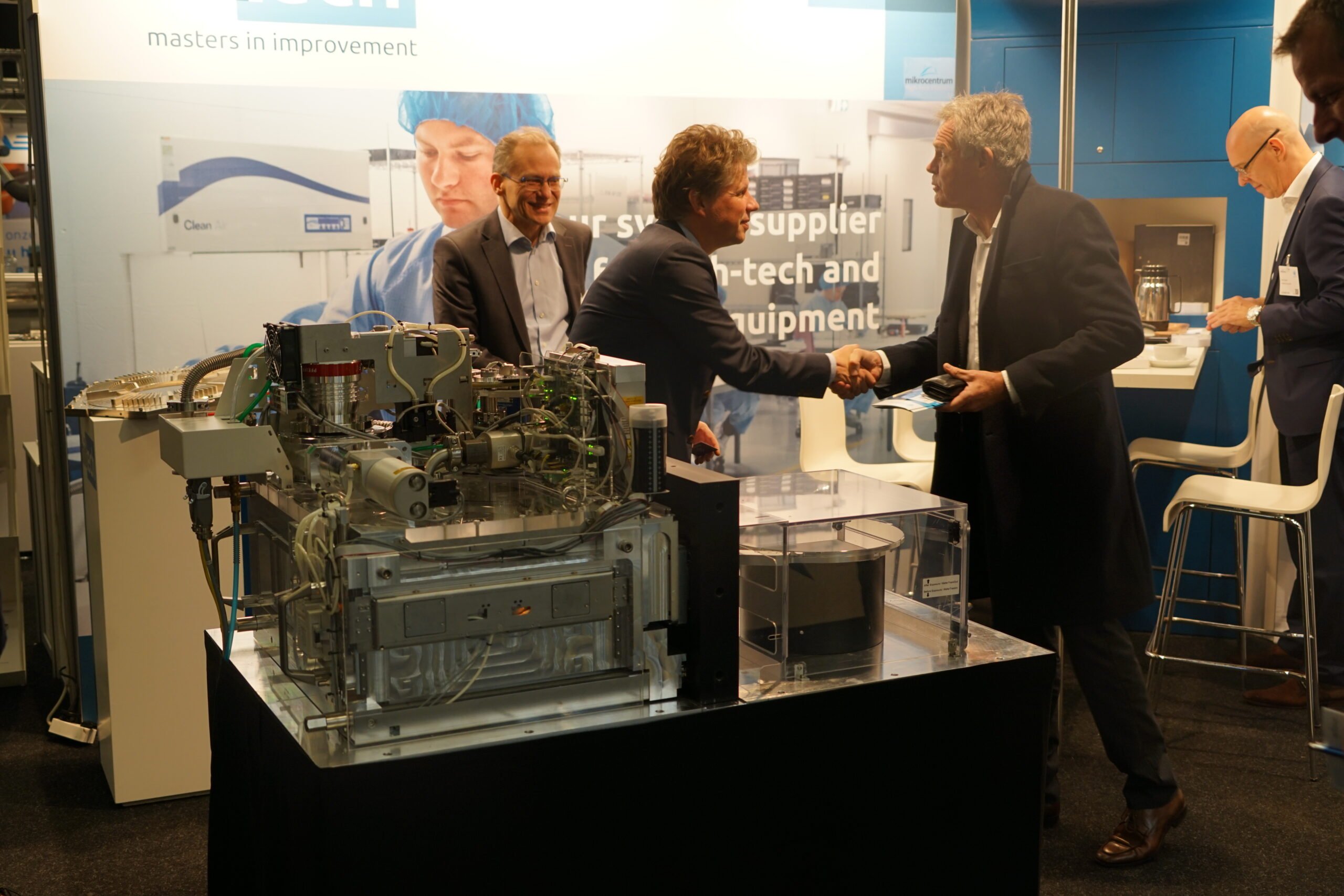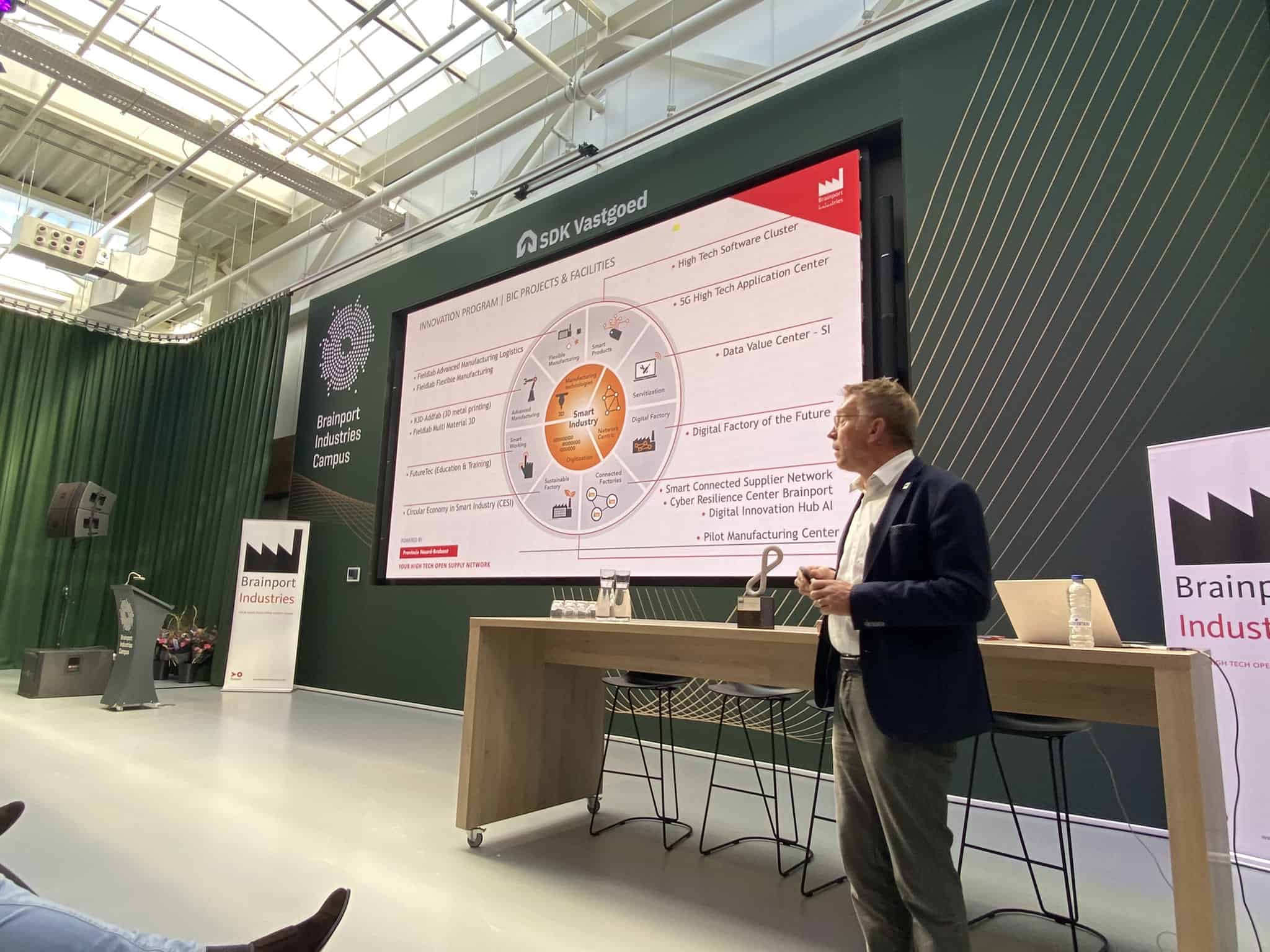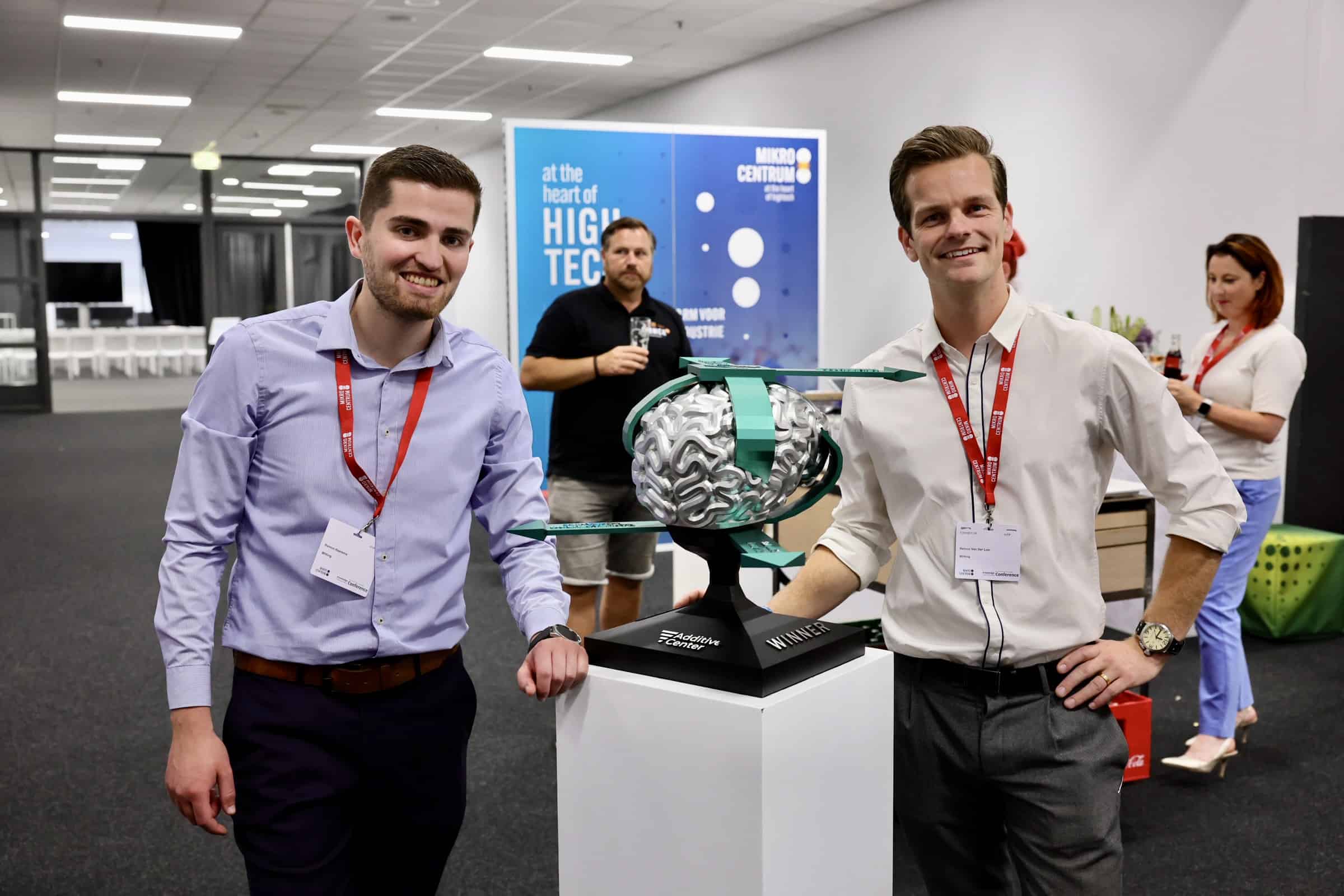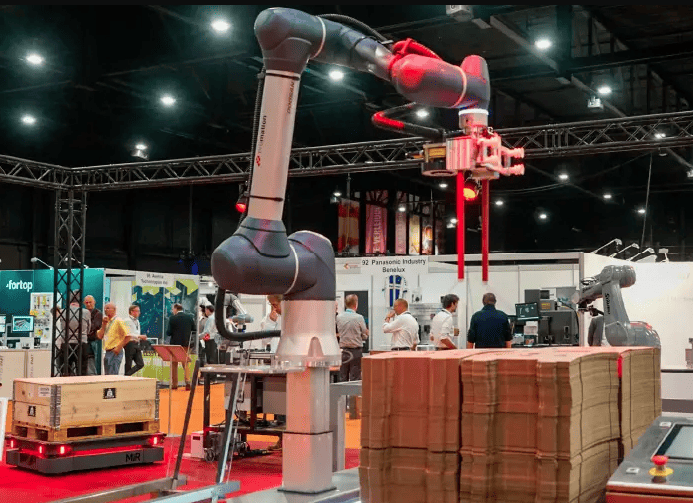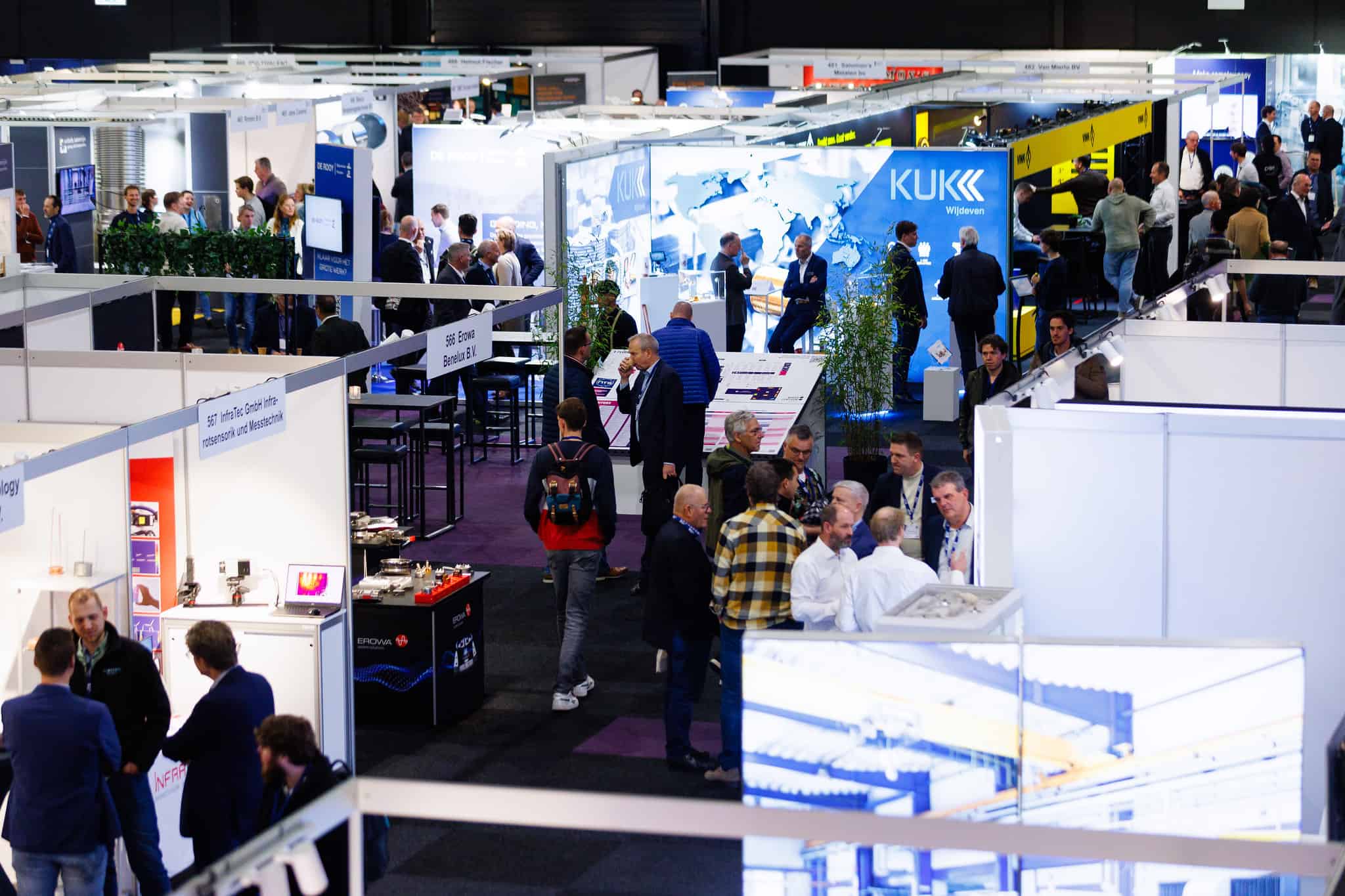
Extremely small parts, made with great precision. That is the essence of precision technology, and much of it was on show at the Precision Fair on November 15 and 16 at the Brabanthallen, a conference venue in the Dutch city of ‘s-Hertogenbosch. For example, these tiny parts can be found in smartphones and smartwatches. So small are also the tiny gears with a diameter of 1.4 millimeters from Laser Technology Janssen, one of the exhibitors. You have to squint your eyes a little to see them clearly. What makes this company special is the laser technology they use to make super-small and detailed parts. Lasers are becoming increasingly important in precision technology. For example, it is possible to use a laser to cut a part out of metal. Because there is no contact with the metal, this is very precise and makes it very suitable for making tiny parts, not only for electronics but also for parts of high-tech machines.
- At the 22nd Precision Fair, high-tech companies presented innovative products such as miniaturized gears and coils.
- The fair is an annual meeting space for professionals, companies, knowledge institutes, and industry associations. In addition to exhibiting new technologies, the event provided opportunities for knowledge exchange and networking.
- This year, additive manufacturing and strict cleanliness requirements for high-tech components were the focus.
The Precision Fair is a great opportunity for companies to show their latest technologies and products and thus make new contacts. KUK Wijdeven showed the smallest coil in the world, as thin as a human hair. Visitors had to view it under a microscope, as it is almost impossible to see with the naked eye. A coil is an electrical component formed by a spiral of wire. But what is it used for? The product is particularly important in health care. For example, this very smallest model is in a catheter. The smaller the components, the less annoying it is for patients. “There is increasing demand for nanotechnology from the medical sector. Especially because it can then be used in the body,” says Paul Pruss, Sales & Marketing Manager at KUK Wijdeven. For example, tiny coils can also be used to check whether a premature baby’s tube feed is properly in the stomach or to control the insulin pump of patients with diabetes.
Networking and sharing knowledge
For many participants, the Precision Fair is an annual networking event to talk to customers, suppliers, and even competitors. “Besides a trade fair, for many people, it is also a ‘party’ where they come together every year with the whole value chain,” says Bart Kooijmans, program manager of the Precision Fair at Mikrocentrum. In addition to companies, several major knowledge institutes such as TNO and all relevant industry associations are also represented at the fair. Visitors have the opportunity to gain new knowledge through an extensive lecture program. The speakers are also exhibitors, allowing people to talk further with them later. Kooijmans: “Combining those elements creates a nice atmosphere at the fair. The networking element is essential here.”
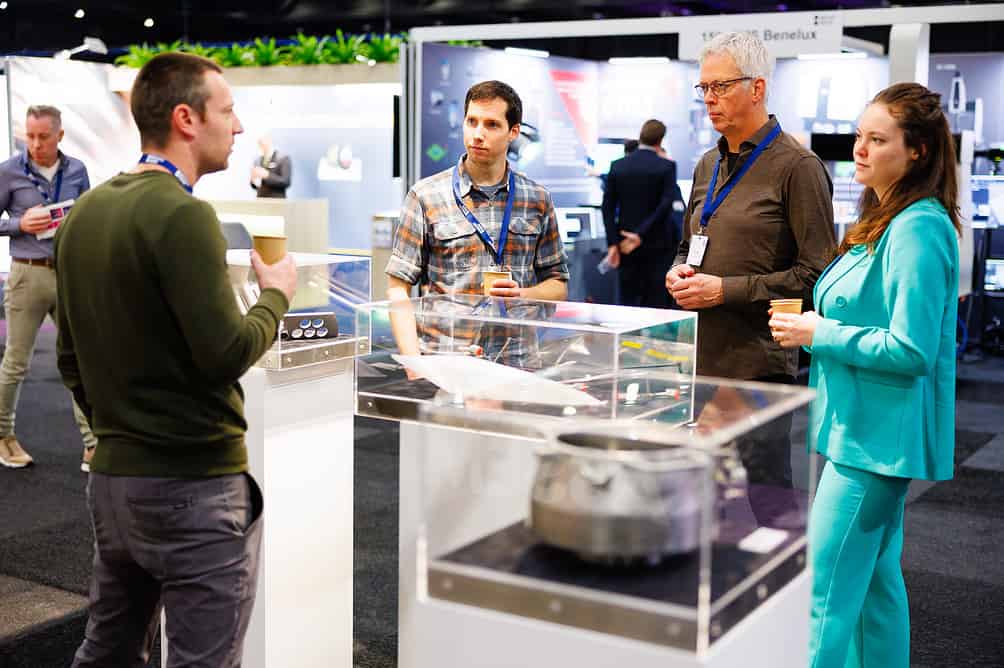
Additive manufacturing
This year, additive manufacturing (AM) and high-tech cleanliness requirements were the Precision Fair’s focus. For example, parts of ASML machines – used to create electronic chips – must meet strict requirements. In other words, they must be super clean. Kooijmans: “Those requirements have rapidly developed in recent years, which is still quite new for many companies. People can share the latest developments and gain new knowledge during the lectures.” Applying additive manufacturing is also a fairly new component in high-tech. A plaza dedicated to additive manufacturing was set up at the fair, where visitors could catch up with the latest developments. “The technology has been available for a long time but has only recently achieved high accuracy levels. And that accuracy is essential if the technology is to be applied in high-tech.”
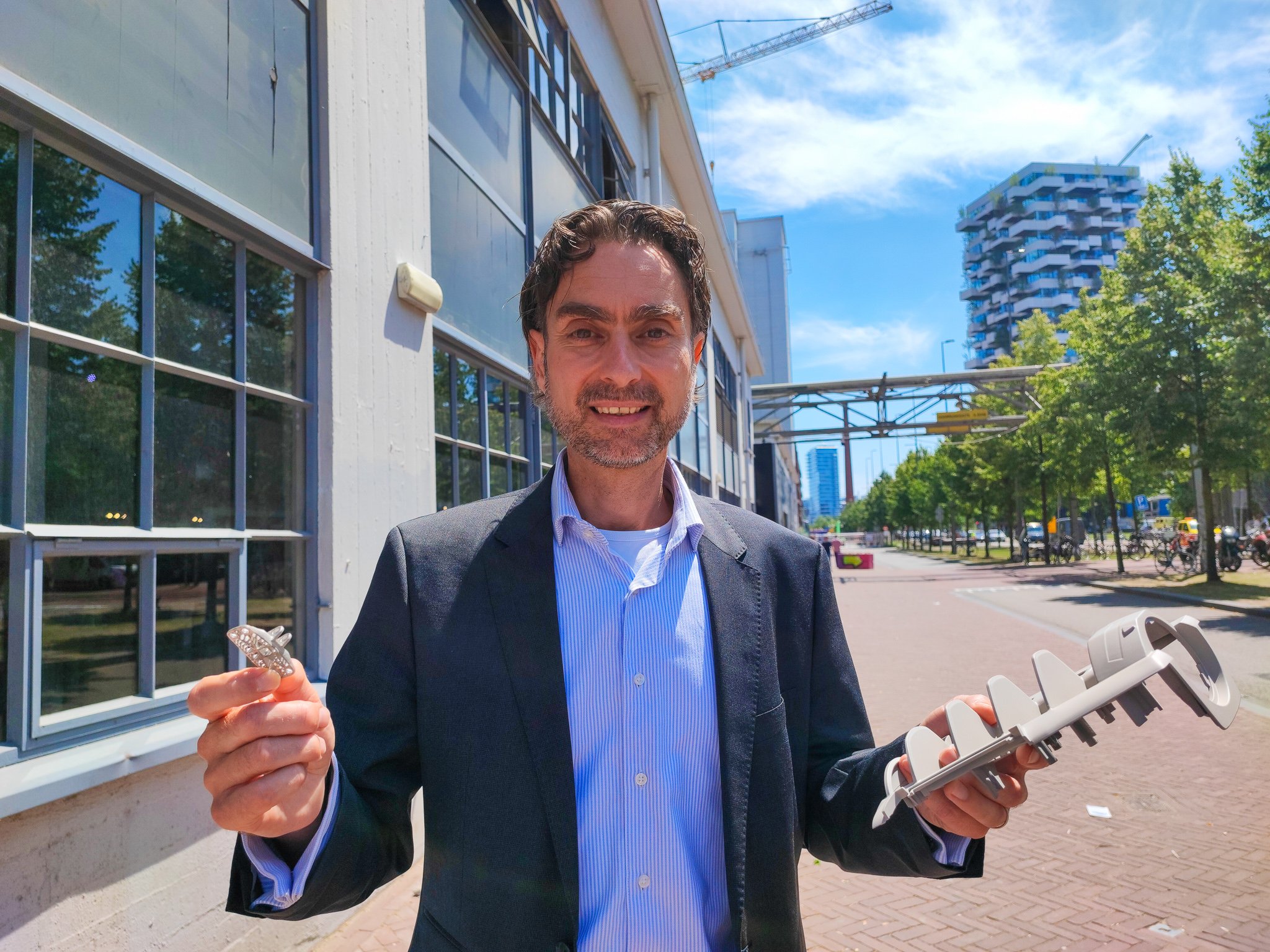
Energy transition is also an important topic. For example, Pieter Poels, mechanical lead engineer at MTA Group, and Berend van der Grinten, director of product development at VSParticle, present a method for using the metal iridium on a larger scale in the energy transition. This metal is indispensable in the production of green hydrogen. The two experts explained during their lecture that the shortage of iridium is one of the reasons why Europe cannot produce green hydrogen on a large scale. VSParticle has invented equipment that can create nanoporous layers of metals such as iridium, and MTA Group is helping to scale up production. In this way, the companies reinforce each other and contribute to accelerating the energy transition.
Education indispensable
At the Precision Fair, in addition to industry, education is well represented. This includes universities as well as colleges and MBOs – junior college education. “They train the technicians of the future. It is important that the contact between educators and industry is good,” Bart Kooijmans states. Roel Brouwers, a teacher at the Leiden Instrumentmakers School (LiS), agrees. This is a vocational school where students learn to design, make, and test fine mechanical instruments. These instruments are used, for example, in scientific research. “Our students are very enthusiastic because they can really make something. At the end of a project, you have a result in your hands,” Brouwers said. The school tries to attract students not only from VMBO but also from HAVO and VMO – different secondary education paths in the Dutch system. Brouwers took the course himself. “It’s just really nice to be able to contribute in this way. And this work is badly needed in industry and science.”
A stage for young talent
Getting young talent excited about the technical world is a crucial component of the industry right now, especially given the current personnel shortages. Therefore, the fair hosted a special arena for Young Talents where student teams from different universities and colleges could present their projects. For example, Team Forze’s hydrogen race car, URE Eindhoven’s Formula 1 race car, and TU Delft’s race car (Star Delft) were on display here.
The eight student teams pitched their ideas to the audience. In the end, Mikrocentrum presented the Young Talent Award to Project March. This student team from the Technology University of Delft impressed the jury with their exoskeleton to support people with spinal cord injuries. The runner-up award from Wevolver went to Team POLAR. The Eindhoven student team is making a rover that can take measurements in impassable polar regions. This will provide accurate insight into the status of our polar caps, enabling the development of more targeted solutions.
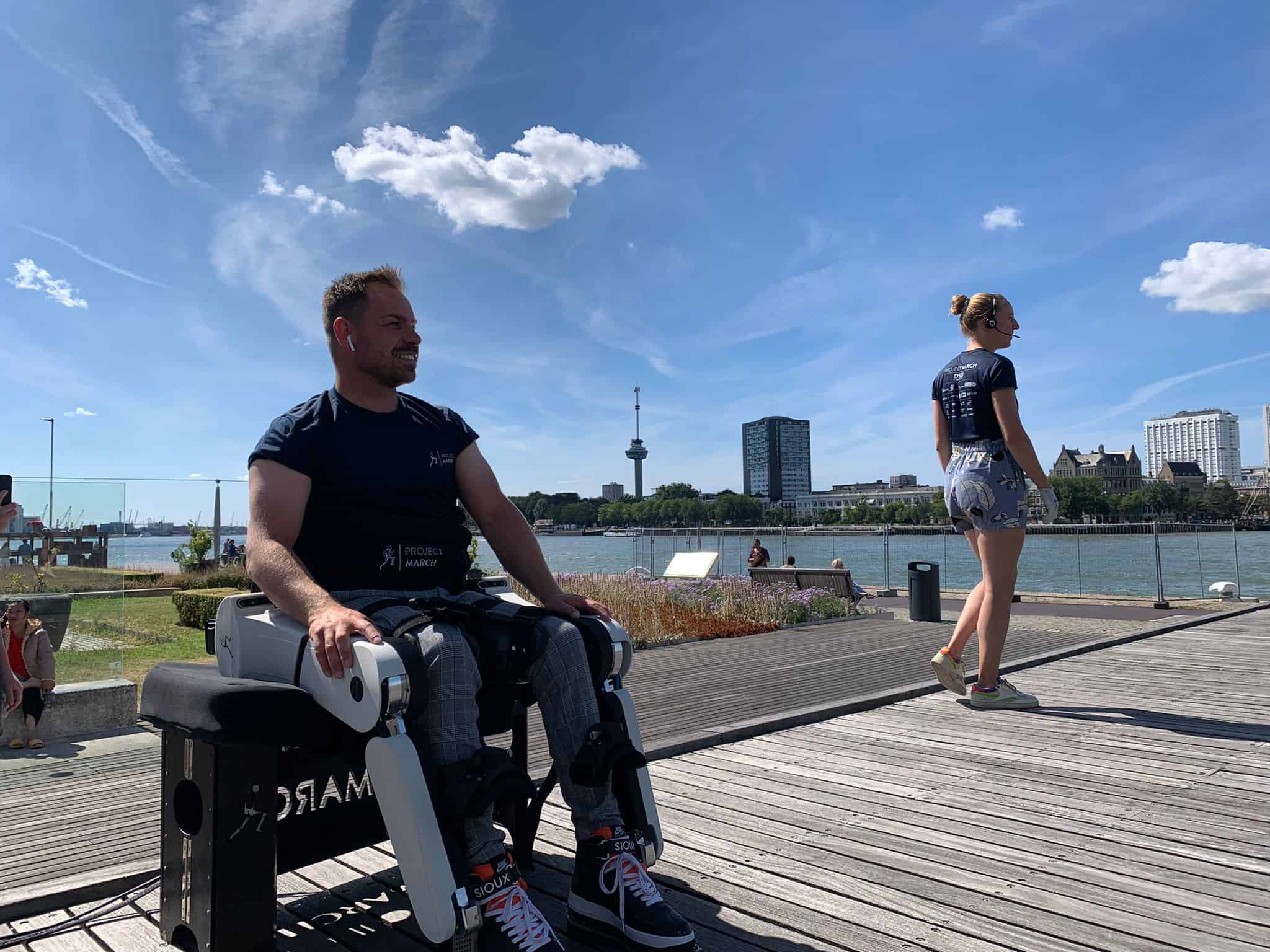
The prizes are important, but the contacts the students gain from them are perhaps even more valuable. Kooijmans: “We try to connect the students with the companies. The exhibitors can find young talent here, and they get the latest developments from the students. In addition, the students can show their plans and possibly attract sponsors for their projects. An exciting interaction.”
Next year, the Precision Fair will take place on November 13 and 14 in the Brabanthallen in ‘s-Hertogenbosch.


